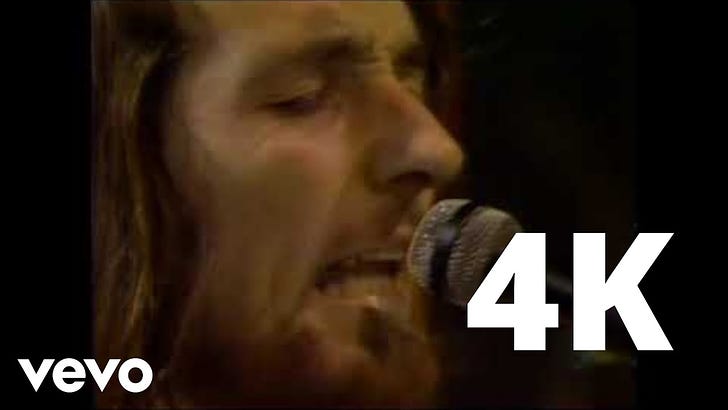I should have seen this coming yesterday, but I didn’t—which is empirical support for my mind being somewhat scattered these days. Several recent discussions with friends culminated in me splatting out some thoughts elsewhere,1 and I thought I was finished with the subject for now. The radio station in my mind had other ideas.
One of the few French phrases I know2 is apt: Plus ça change, plus c’est la même chose. “The Logical Song” hit me hard in 1979 when it was released as the first single from Supertramp’s breakthrough album Breakfast in America. It’s the first song that I remember feeling it captured my internal state well … too well. Coming out right before I graduated high school and matriculated at university didn’t help. I adored it and worked hard to hide that: I didn’t want anyone to suspect how deeply “The Logical Song” spoke to me.
It has reverberated through my life, though. When I started teaching, I wanted to focus on encouraging my students’ critical thinking rather than memorizing facts and dates devoid of context. When I became a massage therapist, I wanted to integrate my understanding of psychology with my practice of bodywork. It seems that a throughline across my varied work history is me trying to find out who I am—and equally important, how I might fit in to the community and culture around me. Who would have thought a small-town Ohio girl could relate so thoroughly to a British boarding school boy’s lyrics?
The lyrics’ resonance with me doesn’t mean that I ignored the music, though. The bass riff and castanets in the intro grab my attention, and everything that comes after competes strongly with the lyrics to keep it. Even though the keyboards dominate overall, everyone contributes to the masterful music that supports Hodgson’s lyrics so well. They are: Rick Davies (backing vocals and keys); John Helliwell (backing vocals, sax, and other sound effects); Roger Hodgson (vocals, keys, and guitars); Bob Siebenberg (drums); and Dougie Thomson (bass). It’s nice to see each getting a little focus in this video.
“The Logical Song” was also probably one of the first songs that made me think about songcraft. How does each musician decide what they should play where? Who suggested the well-placed handclaps and other sound effects? Helliwell is particularly impressive: his sax solo and other riffs are perfect, adding just the right timbre and music without veering into melodrama. How do they know when a song is the best it can be, and stop there? Or would the session tapes (if extant) reveal that a band does go over the line sometimes and has to pull it back?
See, this is why I adore Supertramp3 so much: most of the time, the lyrics and the music provoke substantive feelings and thoughts. How I would love to explore more of their music—as a group, as solo artists, and in other bands—today. Alas, other responsibilities call … including trying to figure out who/how I should be now.
If anyone’s interested in my nonmusical ramblings, it’s on my website
courtesy of a Rush song
and Rush, and on a different level, Yes





Love ST and this song in particular. Reminds me of one of my most favorite quotes, which has been bouncing around my noggin lately:
“After a time, you may find that having is not so pleasing a thing after all as wanting. It is not logical, but is often true.”
I, too, love Supertramp, Rush, and Yes!! :o) Breakfast in America also hit me hard (in a good way), though it's a toss-up as to whether "The Logical Song" or "Take the Long Way Home" is more evocative for me. The opening harmonica on the latter grips my heart every time.
When you have time and if you are not already familiar with it, I highly recommend Roger Hodgson's solo album In the Eye of the Storm: https://www.amazon.com/Eye-Storm-ROGER-HODGSON/dp/B000026GZH/ref=tmm_acd_swatch_0